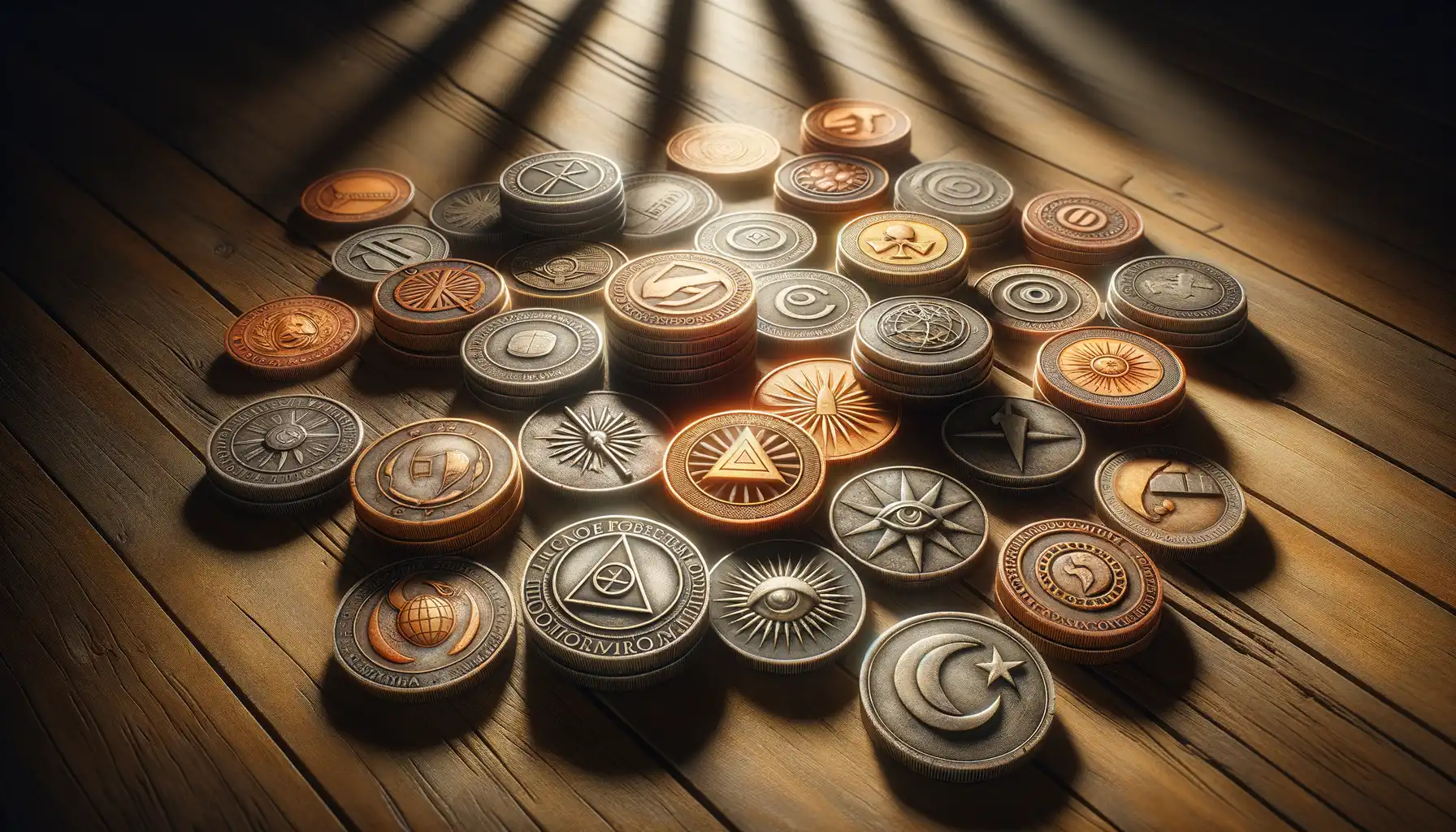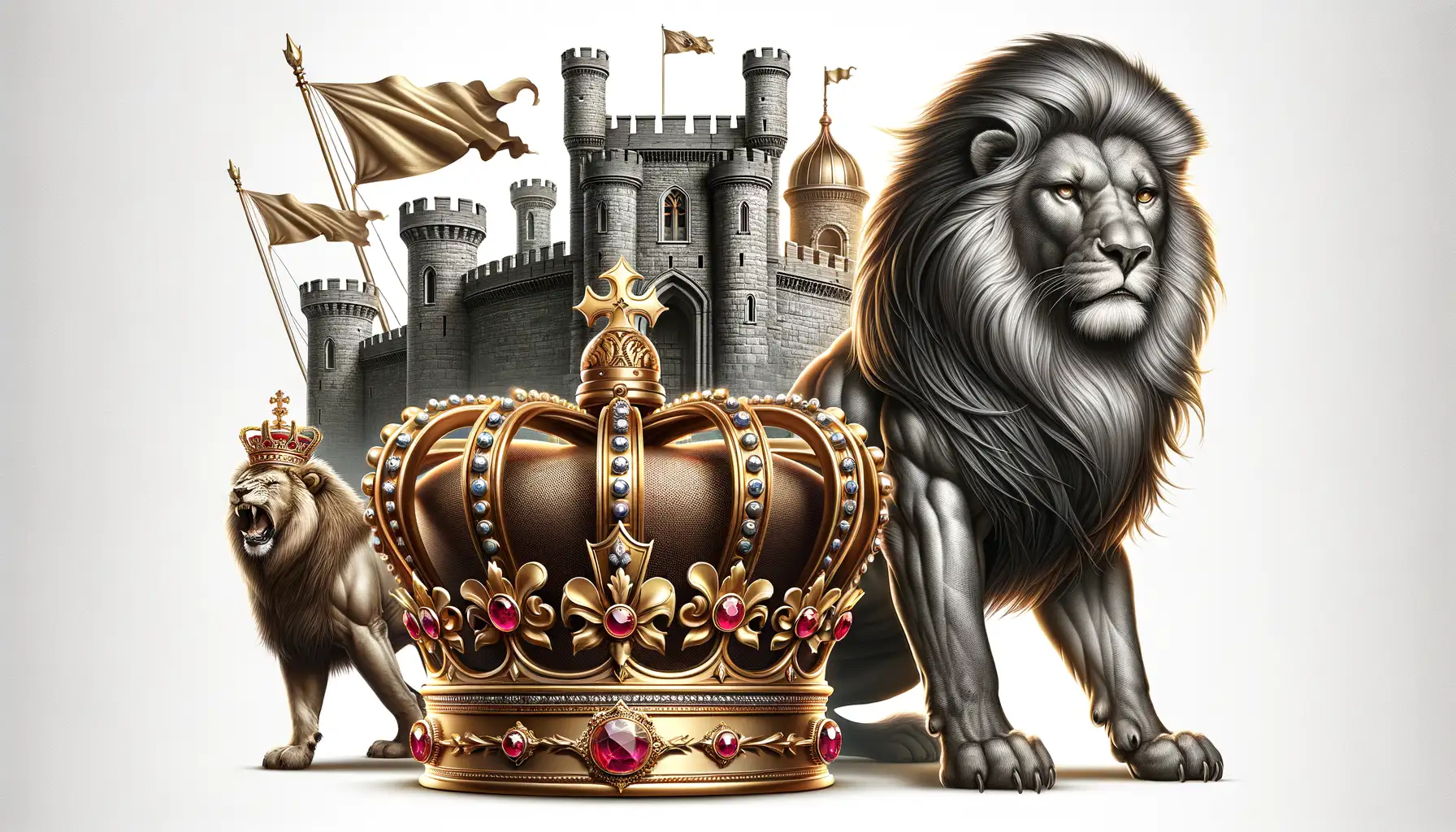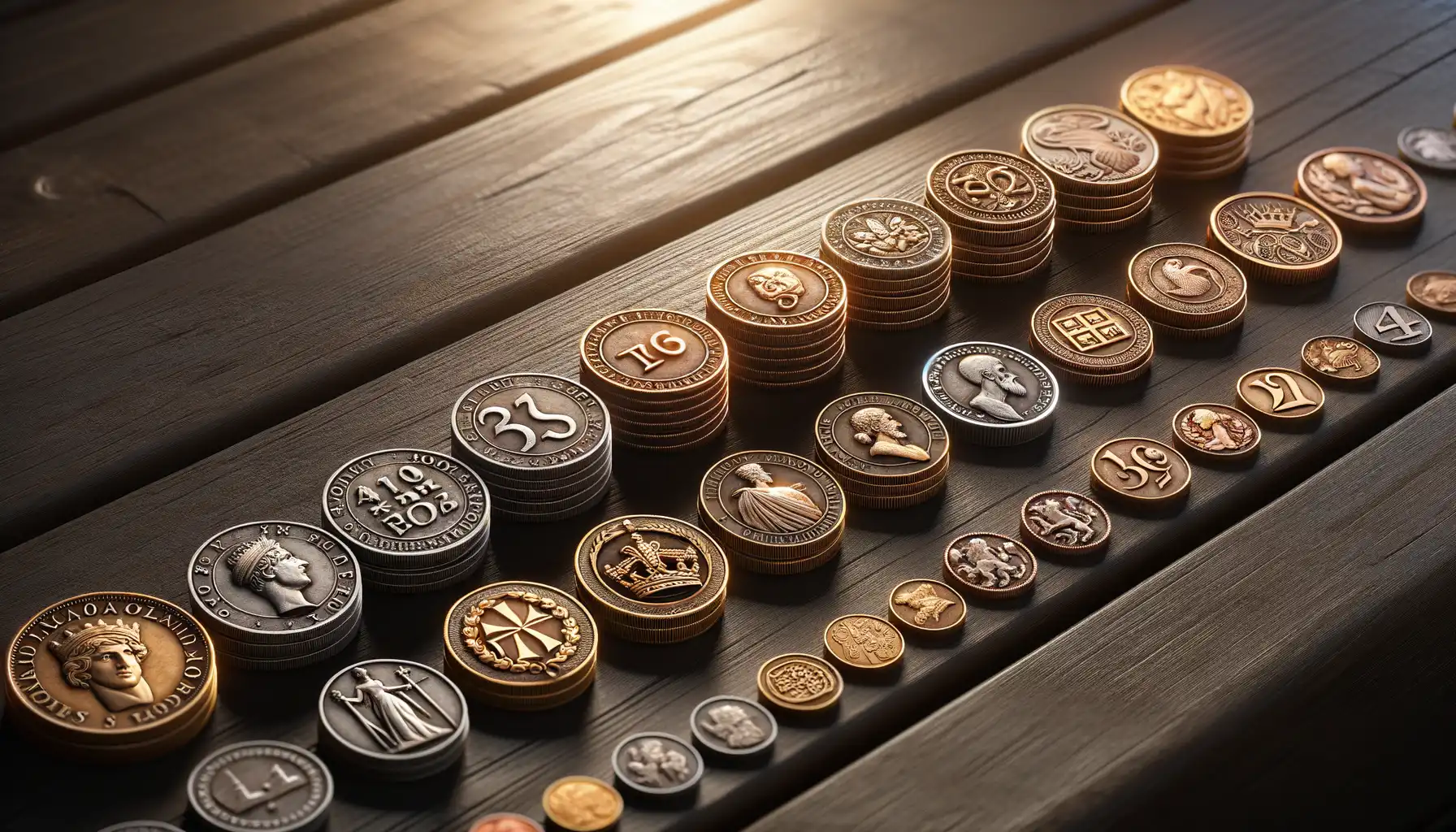Historical Significance of Coins as Symbols of Power
A Journey Through Time with Coins
Have you ever held a coin in your hand and wondered about the stories it could tell? Coins are more than just metal discs—they’re like miniature time capsules, whispering tales of power, ambition, and dominance. For centuries, rulers have used coins as symbols to assert their authority, turning everyday currency into tangible proof of their reign.
Think of the Roman emperors stamping their profiles onto denarii. These weren’t just portraits; they were declarations: “I am here. I am powerful. I control your world.” Likewise, ancient Greek city-states often adorned their coins with iconic symbols like Athena’s owl or Zeus’ thunderbolt, reminding citizens—and enemies—of their divine favor and strength.
Why did this matter so much? Well, imagine if every coin in your pocket carried a message from your ruler. It’s like having their autograph…but with an agenda.
- The face of Alexander the Great on silver coins? A subtle way to say, “I’m a living legend.”
- Viking rulers crafting bold designs with warrior imagery? A clear flex of military might.
Coins don’t just buy goods—they’ve bought loyalty, respect, and fear. That’s real power, etched in metal.
Coins as Tools for Propaganda and Authority

A Canvas of Power in Every Pocket
Coins have long been more than just currency—they’re miniature billboards, carrying the messages of rulers straight into the hands of their people. Imagine holding a coin and feeling its cold metal surface; it’s not just a tool of trade but a mouthpiece for authority. From the Roman Empire to modern nations, leaders have wielded coins as tools of propaganda, turning them into messengers of loyalty, dominance, and control.
Take, for instance, the Roman emperor Augustus. His coins bore inscriptions proclaiming him as the “Son of the Divine.” It wasn’t just a tagline; it was a psychological masterstroke, subtly embedding his godlike status into everyday transactions. And who could argue when it was stamped onto every denarius in circulation?
- Imagery of Victory: Coins often featured victorious leaders on horseback, cementing their prowess in the minds of citizens.
- Divine Symbols: From eagles to laurel wreaths, icons aligned rulers with gods or celestial forces, ensuring their reign seemed destined.
Every time someone handed over a coin, they reinforced the ruler’s narrative—unconsciously participating in a vast, orchestrated campaign of allegiance. Isn’t it fascinating how something so small could wield such colossal influence?
Design Elements Depicting Sovereignty and Strength

Symbols That Speak Louder Than Words
Imagine holding a coin from centuries ago. Its weight, its texture—each detail is telling you a story. But beyond the metal lies an artistry that speaks volumes about who held power. The designs etched into coins are intentional; they go straight for your emotions and leave no room for doubt about sovereignty and strength.
Consider the majestic lion on the reverse of ancient Greek coins. It wasn’t just decoration—it was a proclamation: “Here lies courage, dominance, and control.” Or the Roman emperors immortalized with towering laurel wreaths around their heads, their profiles practically daring you to question their authority. These symbols didn’t whisper authority—they roared it.
- The eagle—soaring high, untamed, and fiercely independent.
- The scepter and orb—visual shorthand for divine right.
- Fortresses or citadels—unbreakable, protective might made tangible.
Coins became pocket-sized banners of pride. Every citizen carried a reminder of their ruler’s might. When you flipped one, you weren’t just seeing a piece of currency—you were holding an artifact of power in the palm of your hand.
Details That Demand Respect
Craftsmanship wasn’t an afterthought—it was strategy. The sharpness of a profile’s jawline, the meticulously engraved crown encrusted with symbolic jewels, even the flowing robes—they all mattered. A weak design? That would signal weakness in leadership. A strong, defiant stance on a coin? Now that’s a visual decree.
Some leaders even deified themselves through coins. Take Julius Caesar, whose face appeared on Roman denarii while he was still alive—a risky move but effective. Through these artistic choices, rulers said, “I’m not just a man; I’m eternal, untouchable.”
Perhaps most powerful of all were the inscriptions. Words like *rex* (king) or *imperator* (commander) left no ambiguity. Every detail down to the last curve of a letter was laden with intent, delivering a message as clear as the sun rising: sovereignty reigns supreme.
Cultural and Political Impacts of Coinage

The Ripple Effects of Coins on Societies
Coins weren’t just pocket change; they were social and political lightning bolts. When a ruler’s face or emblem graced a coin, it wasn’t merely decoration—it was a bold statement. A coin in your hand could whisper, “This is the power that rules over you.” Think about it: when Alexander the Great minted coins with his image as Heracles, he wasn’t just advertising his conquests; he was shaping how millions across vast lands would perceive him.
But the influence didn’t stop at leaders. Coins became cultural bridges, carrying symbols, languages, and even artistic styles across borders. Take the Roman denarius, for example. It wasn’t just currency—it spread Roman culture wherever it landed. And oh, the stories these coins told!
- Athena’s owl on Greek tetradrachms symbolized wisdom and warfare, embodying Greek ideals.
- The shift to Christian iconography on Byzantine coins—what a turning point for culture and belief!
When Money Shaped Beliefs
Coins didn’t just serve economies; they shaped ideologies. Imagine a peasant receiving a coin stamped with phrases like “Divine Right” or images of invincible kings. Political propaganda? Absolutely. But also subtle persuasion. These small, everyday objects fueled loyalty, identity, and even rebellion.
Evolution of Coin Symbolism Over Time

From Ancient Icons to Modern Storytellers
Coins have always been more than just jingling pieces of metal in your pocket—they’re miniature canvases, breathing stories of power, faith, and ambition. As the centuries rolled by, the symbols etched into their shiny surfaces transformed, reflecting the rise and fall of empires, cultural upheavals, and shifting ideologies.
Take ancient Greece, for instance. Their coins bore images of gods like Athena or Zeus, projecting divine protection over their city-states. Fast forward to medieval Europe, and monarchs began using coins to plaster their faces as a declaration of dominance—subtlety was *not* in style here.
- In Renaissance Italy, coins turned into intricate artworks, flaunting family crests and exquisite designs tied to merchant dynasties’ rise.
- By the 20th century, revolutionary movements often replaced royal portraits with empowering symbols of liberty and hope, such as the iconic French Marianne.
Every scratch, every line on a coin whispers its own era’s priorities and aspirations. Today, digital currencies might challenge traditional coinage, but even in their fading popularity, these metallic storytellers remain relics of human ambition and ingenuity.
The Power of Tiny Details
Look closely. That eagle gripping arrows on American quarters? It practically screams strength and preparedness. Or consider Japan’s yen, decorated with cherry blossoms—a nod to the fleeting beauty of life itself. No design is accidental. Even the choice between a bare metal finish or a glossy polish can carry weight: rustic authenticity vs. polished sophistication.
Coins teach us how societies frame what’s important. They let rulers leave behind marks that outlast fortresses. It’s proof that sometimes, the smallest objects carry the heaviest messages.